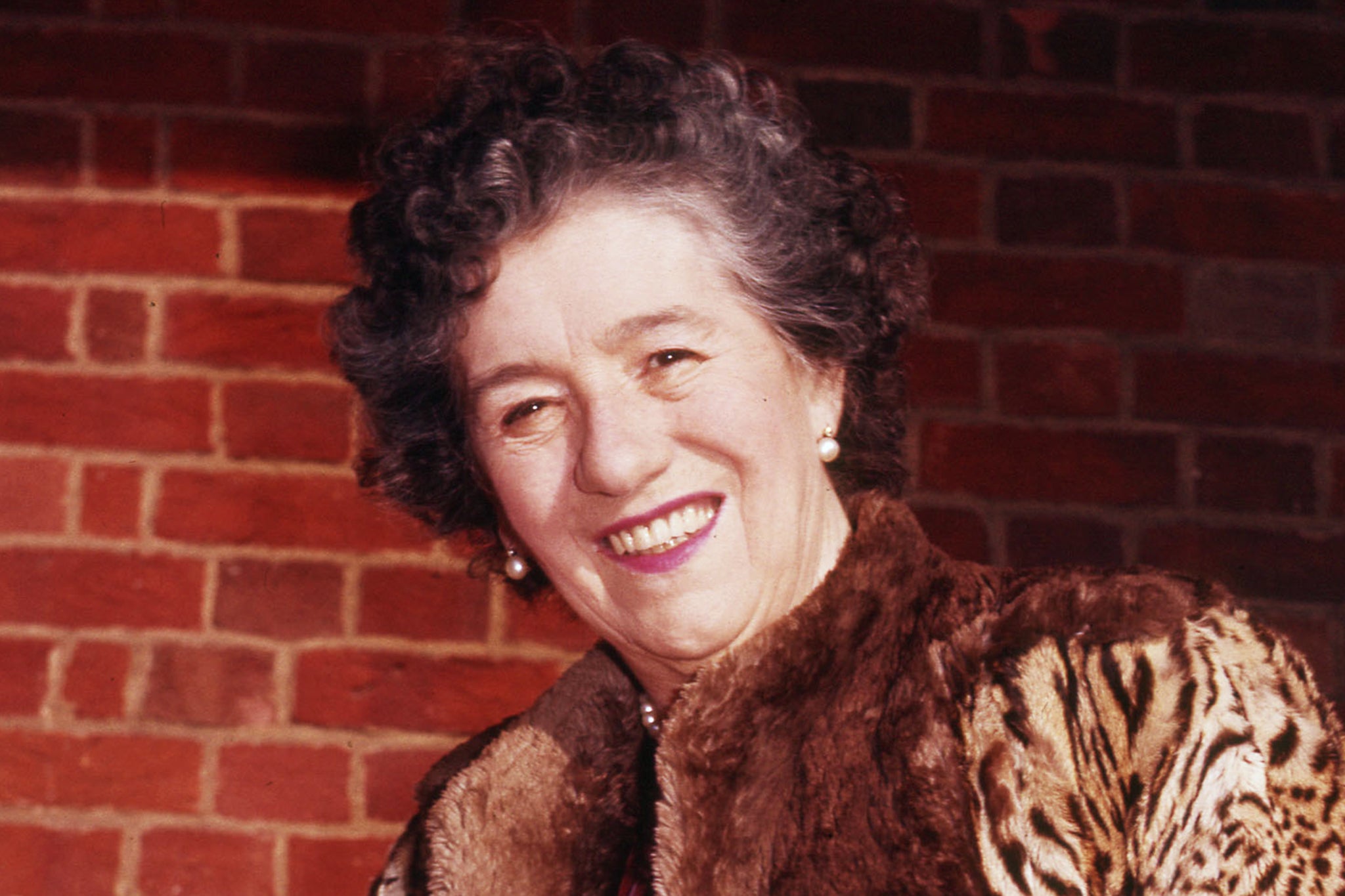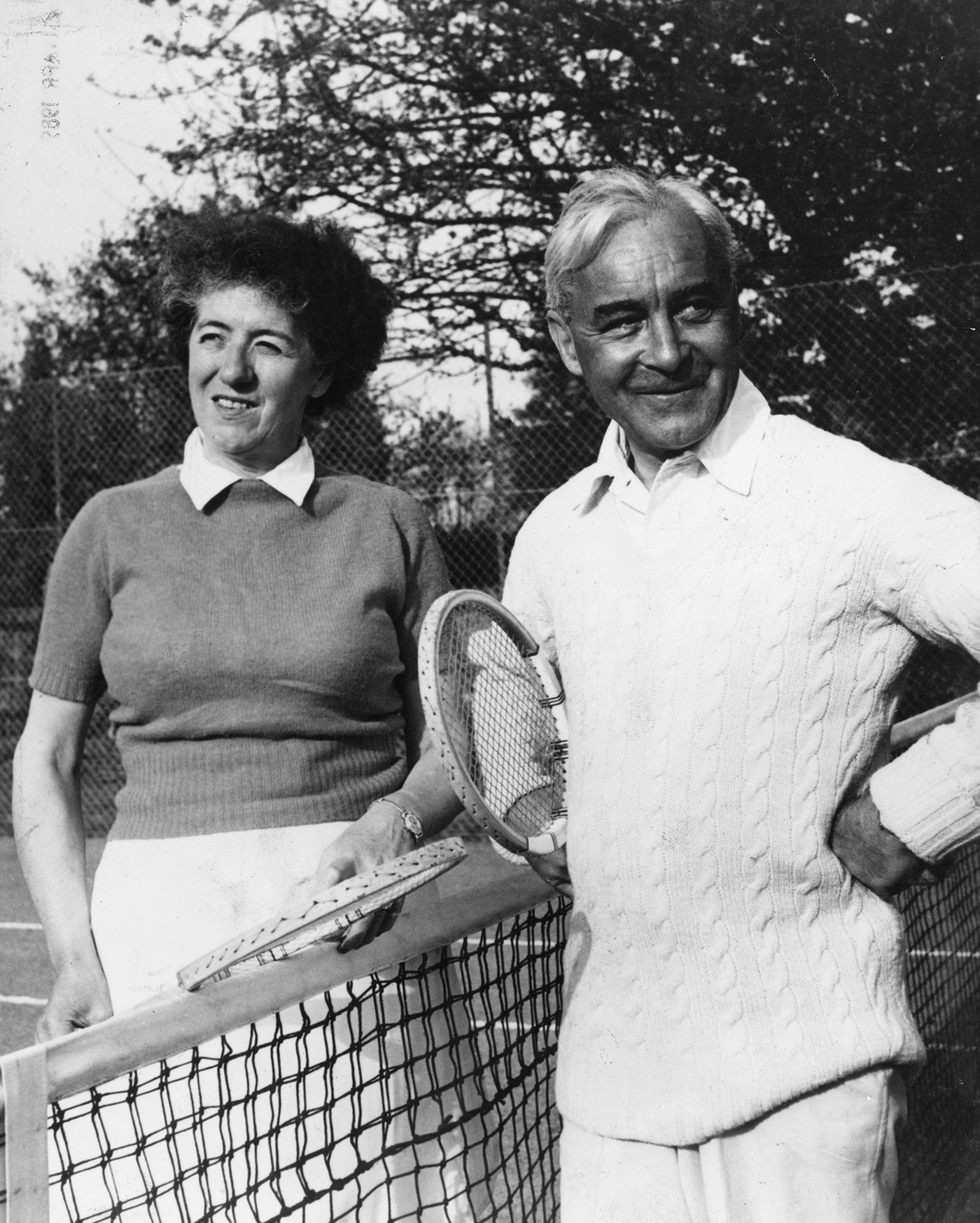So Enid Blyton had a series of scandalous affairs? That’s no surprise to me...
…naked tennis, heavy boozing and multiple affairs with men and women – the new claims about the Famous Five author’s relationship with her female illustrator are not in the least bit shocking to Nadia Cohen, who uncovered a torrid and complicated private life in her diaries and letters

Infidelity, betrayals and a riot of love affairs are a far cry from the wholesome image of much-loved children’s author Enid Blyton.
Her familiar stories famously told of midnight feasts, nail-biting lacrosse matches and picnics with lashings of ginger beer – a phrase that itself became shorthand for the bucolic world of Blyton’s characters.
But this week, the grandson of Lola Oslow, one of Blyton’s illustrators, has claimed that she had an affair with the author. Nicholas Royle made the revelation in his new book David Bowie, Enid Blyton and the Sun Machine.
This is not the first time Blyton is thought to have had a gay relationship, as I discovered while researching her colourful and fascinating life for my book, The Real Enid Blyton. Having looked through her diaries, letters and the memoirs of her own daughters, I discovered claims that Blyton had multiple affairs with men and women while married.
Blyton was well into her twenties before she showed any interest in men. But since it was highly unusual at the time for a woman, let alone an unmarried one, to have a high-profile lucrative career, her publishers introduced her to Major Hugh Alexander Pollock, a former soldier 10 years her senior who was an editor at the firm.
Hugh was handsome, debonair and worldly, and Blyton was charmed from the moment she met him. There was just one snag: Hugh was also married. True, he was separated, but such distinctions meant little in the buttoned-up 1920s, and openly courting a man who was legally married to someone else was still scandalous, not least for a former teacher turned children’s author.

Blyton was certainly not the sort of woman to let such a trifling matter stand in her way and by 1924, barely a year after they had first met, she had become Mrs Pollock and moved to a large house in Buckinghamshire.
So far, so suburban. But while she meticulously crafted her public image away from the limelight and the jaunty fiction, Blyton’s real world was complex, troubled and rather racy. Her private life was far more suited to a modern-day soap opera than any of her wholesome boarding school dramas.
Even before their wedding, the couple were engaged in the sort of furious rows that would foreshadow those that lay ahead. The baby the couple both wanted took longer than they thought, six years to be precise, during which time Blyton underwent pioneering fertility treatment in the form of daily hormone injections.
Blyton was initially delighted with the arrival of her firstborn, Gillian in July 1931, when she was 34, although it was only a matter of weeks before she hired full-time live-in nanny Betty to join the roster of staff she now employed.
Betty not only looked after Gillian during the day but slept in the same room overnight, and by the start of 1932, Blyton was spending barely an hour a day with her daughter. It says much about her priorities that while she scarcely mentioned little Gillian in her diary entries for January of that year, she recorded updates on her new book almost every day.
Betty did not last long: she was fired when Gillian fell out of her cot shortly after her first birthday.
The replacement nanny was a different matter entirely. Hired after the birth of Blyton’s second daughter, Imogen, in 1935, Dorothy Richards was a trained nurse who often dressed in a formal shirt and tie – and quickly became far more than a humble employee.
From the moment of Richards’ arrival, the pair struck up an intense friendship that long outlasted Richards’ employment – and left her husband feeling surplus to requirements. When they were not out for long walks the two shared private jokes and it was now Richards, not Pollock, to whom Blyton turned to proofread early drafts of her work.
So significant was their friendship that over the years it was implied that they were lovers too. “There may have been some homosexual attraction between these two women,” Imogen herself observed in her memoir, A Childhood at Green Hedges, which she wrote two years after her mother died. Certainly, the language in the letters Blyton and Richards exchanged seems suffused with romantic attachment. “I want to hear all you have to say even if I argue at first and go all around things,” Blyton wrote in one. “You can say anything to me. I want you to.”
By 1938 when her children were just seven and three, Blyton and Pollock, who by now was drinking heavily, were living virtually separate lives.

There was little about Blyton’s home life that in any way resembled the rosy-cheeked innocence of her stories. She was an advocate of children’s literacy but rarely read to her own offspring, and they said later that physical affection was more likely to be a beating with a hairbrush than a cuddle. Gillian and Imogen were dispatched to boarding school at the earliest opportunity, leaving Blyton with no official need for a nanny, but she and Richards remained close for years.
What domestic energies Blyton retained were ploughed into throwing glamorous parties at the family’s palatial eight-bedroom home, Green Hedges, in Beaconsfield. But the guest lists frequently included unattached young men, among them several young army officers who had been posted nearby, as well as a bachelor doctor who moved in next door.
It was not long before Blyton’s frantic socialising led to her becoming the focus of local whispers, not to mention the subject of newspaper gossip columns. One rumour had it that visitors once arrived at the house to find their hostess playing tennis with her newfound local friends entirely naked.
Pollock was furious when he came home from work with the Home Guard to learn that his wife had been entertaining in an unsuitable way in his absence, although he scarcely had cause to complain, given he was himself cavorting with a beautiful young novelist called Ida Crowe.
By early 1941 the marriage was all but over, its fate sealed by Richards who, in the spring of that year, invited Blyton to a house party in Devon. Among the guests was a handsome surgeon called Kenneth Darrell Waters – Blyton’s Malory Towers heroine Darrell Rivers would later be named in his honour – and sparks flew the moment he and Blyton met over a game of bridge.

As soon as they returned to London, Blyton and Waters started an affair, meeting in secret as often as they could. Blyton rented a discreet flat in Knightsbridge to carry on their romantic liaisons – brazenly using Richards’ name to cover her tracks.
She had no problem using her dear friend as a scapegoat: when confronted at Green Hedges by Waters’ furious wife, Blyton not only made a complete denial but claimed Richards was the true culprit – a plausible excuse seeing as the flat was rented in her name.
Richards was mortified but said nothing out of loyalty to Blyton and to ensure she did not suffer any bad publicity.
Blyton’s books might have become synonymous with a strong moral and ethical code, but this was sorely lacking in her private life. As Imogen later wrote: “For a whole year she carried on her lives with two different men, deceiving, or appearing to deceive, everyone.”
When Pollock returned to the marital home at the end of the war, he found Waters staying there, his clothes hanging in the wardrobe.
Humiliated, Pollock left for good after one last argument. Although Blyton managed to conceal the fact from her daughters, then aged 13 and 10, for more than 18 months, using the war as an excuse for his lengthy absence.
It would prove the start of an increasingly bitter rift. She insisted that she should be the one to launch the divorce petition against Pollock to avoid any adverse publicity – citing his adultery with Crowe.
Blyton finally married Waters at a low-key ceremony at Westminster register office in October 1943. Richards, devastated by Blyton’s hasty remarriage, refused to attend.
‘The Real Enid Blyton’ by Nadia Cohen is published by Pen & Sword
Subscribe to Independent Premium to bookmark this article
Want to bookmark your favourite articles and stories to read or reference later? Start your Independent Premium subscription today.






Join our commenting forum
Join thought-provoking conversations, follow other Independent readers and see their replies
Comments